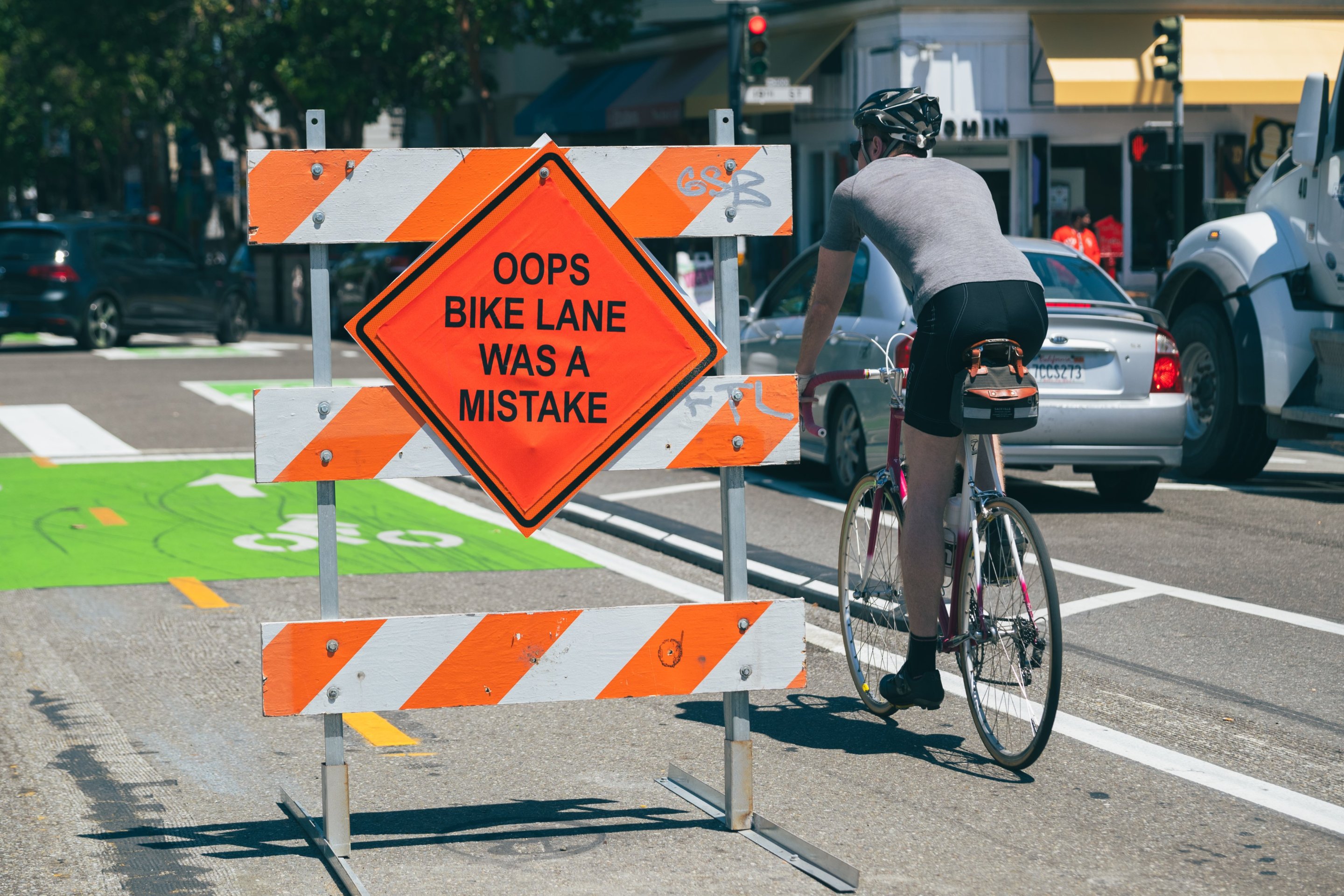Brain Trust Preps Bay Area Transportation Mega Measure
4:16 PM PDT on August 27, 2019
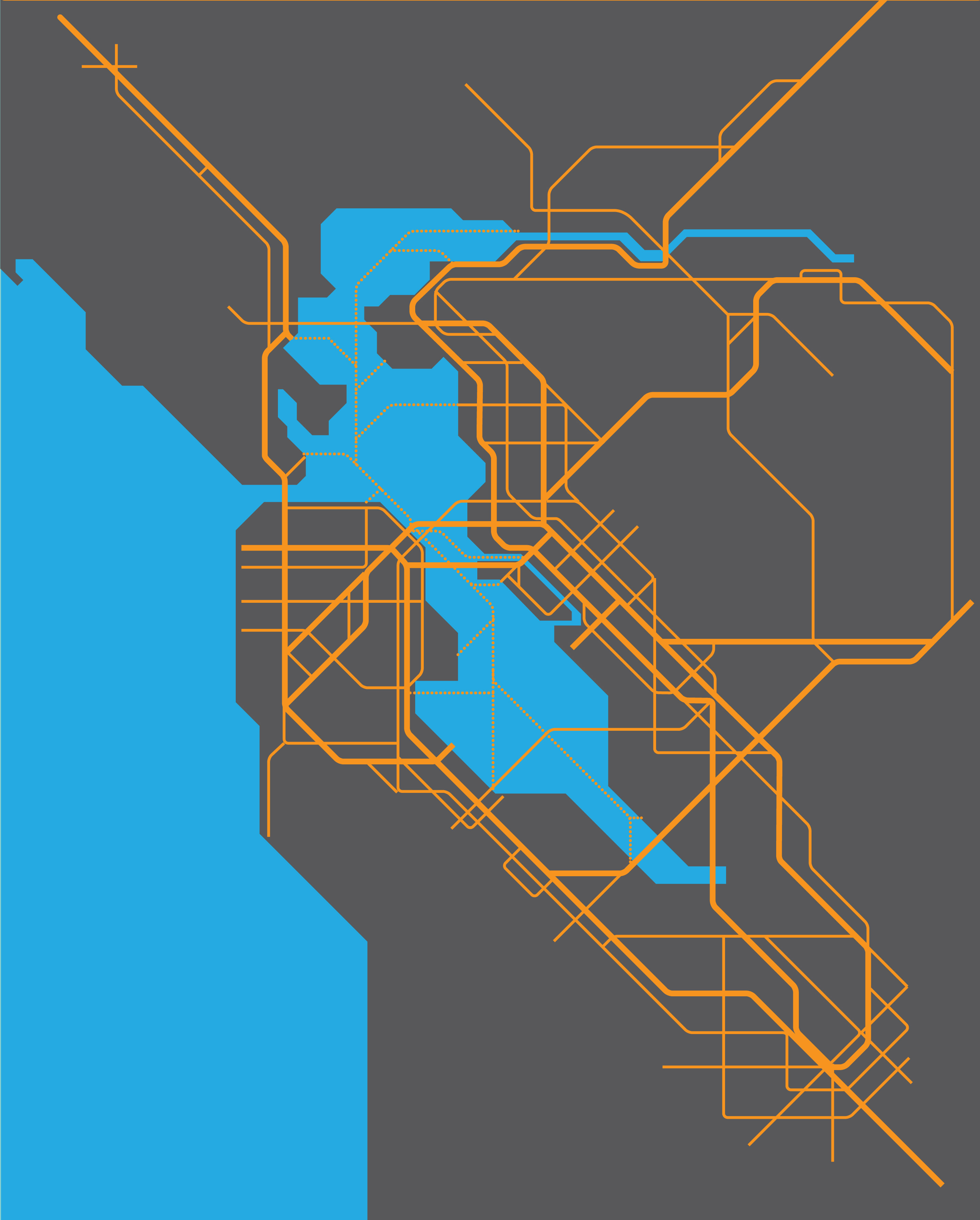
Image: Seamless Bay Area
Note: Metropolitan Shuttle, a leader in bus shuttle rentals, regularly sponsors coverage on Streetsblog San Francisco and Streetsblog Los Angeles. Unless noted in the story, Metropolitan Shuttle is not consulted for the content or editorial direction of the sponsored content.
Holding yesterday's "Building a Transportation Measure for the Bay Area in 2020" forum in Oakland was a no-brainer, even though one of its three sponsors, the Silicon Valley Community Foundation (SVCF), is based in Mountain View. "It’s too hard for everyone to get there by transit," said Erica Wood, the SVCF's Executive VP for Community Impact.
Wood, who kicked off the meeting, used that fact to illustrate the situation for too many residents of the Bay Area--it's just too complicated, too expensive, and way too time-consuming to get around by transit. "We have a public transit system that doesn’t work for the people who need it most," she added.
But it can be fixed. It'll just take some money--say, $100 billion?
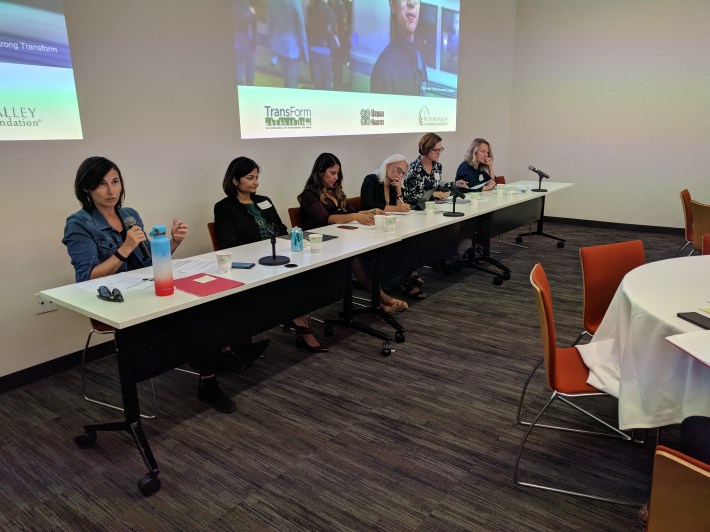
From TransForm's web page, which, along with the SVCF and Urban Habitat, is working on a 'Green New Deal for the Bay Area,' or a tax to raise that money:
Bay Area leaders and advocates are preparing to put a massive funding measure on the ballot in either 2020 or 2022 to raise funds regionally for transportation, housing, or both at a scale never before imagined. TransForm is coordinating with a wide range of partners and allies to ensure the mega measure will have strong equity provisions, and moves us towards our climate goals by reducing driving and greenhouse gas emissions.
It is critical to elevate community voices early in the process, and ensure the development of the measure and its projects and priorities is transparent. We’re convening public and private conversations and events for stakeholders and voters to learn about the opportunities a mega measure can create, and weigh in on the process.
Is it realistic to hope to get two-thirds of voters to approve such an expensive measure? Yes, the Bay Area managed to pass Measure RR, the BART bond, in 2016--but that was for a measly $3.5 billion.
Los Angeles passed a $40 billion sales tax funding Measure R in 2008, and then its successor, Measure M, in 2016. That one extended the sales tax and will result in $120 billion for transportation over the coming decades. And Seattle approved a $54 billion tax for Sound Transit 3 light rail expansion, as well as another measure that invests in sidewalks, transit, and other transportation improvements.
That's why the organizers of the mega-measure panel invited Gloria Ohland of Move LA to talk about M and R. "Now we have $120 billion for fifty major projects and we have got so much borrowing power," she told the audience of some eighty advocates and city and regional officials. But that success comes with a warning for the Bay Area: LA can access lots of matching funds from Washington D.C. "We’re going to beat you guys and get all the money from the feds. Unless you step up, we’re going to take it all," said Ohland.
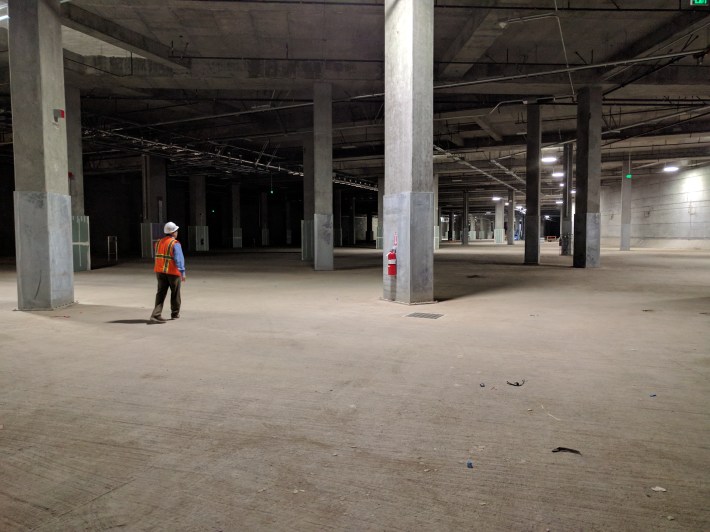
"It always seems impossible until it’s done... in Seattle we called it the moonshot.," added Shefali Ranganathan, a Deputy Mayor for the City of Seattle. "And we went through this in 2015 and 2016. The key to making this plan a reality is to really root it in a coalition." She said the Bay Area's time has come: "With this mix of terrible congestion and growth you have a public that’s ready for bold action."
In fact, the high cost of housing was repeatedly cited by the panel as both the driver for a transportation measure and a necessary component of it. "It's the critical issue," said the Metropolitan Transportation Commission's Therese McMillan. She said the public, overburdened by housing costs, is only likely to vote 'yes' in sufficient numbers if they see it as a way to access affordable homes. "It’s fine to talk about congestion, but what are you going to do about my housing?" is what they'll ask, she said.
"The housing crisis is real," said Elizabeth Ortega-Toro of the Alameda Labor Council, who was also on the panel. "I represent the workers in this community who need to get to work, whose kids need to get to school."
The panelists and those in the audience seemed to agree that any bond measure will have to be coupled with legislation that will open the door to housing development around rail stations, such as Senate Bill 2923, which allows BART to build housing on the land it owns around stations. But given the fate of the last generalized transit-housing bill, S.B. 50, getting a funding measure that's connected to transit-oriented housing could be complicated.
To win against such challenges is going to take a clearly defined and realistic vision, said Thea Selby of the San Francisco Transit Riders. No doubt remembering the failure of San Francisco's Prop. K sales tax adjustment, Selby said that it's important to have a clear, ambitious and bold vision, but to keep expectations realistic. Without that, "...what ends up happening is we don’t get good outcomes and it’s not winnable. We want to win this measure."
One thing that wasn't mentioned by the panel: unlike LA and Seattle before their measures passed, the Bay Area has the bones of a good transit network already in place. With BART, Caltrain, SMART, Muni, VTA, Amtrak, ACE, and the ongoing construction of high-speed rail, the region is starting from a better place than other West Coast cities.

Major projects are needed, such as a subway under Geary, a second Transbay crossing, and of course, the extension of Caltrain and high-speed rail to downtown San Francisco. But the Bay Area can also make huge improvements by investing in relatively short connections to stitch existing systems together: think of the defunct Dumbarton bridge, pictured above, which could solve Wood's problem of getting between Oakland and Palo Alto by transit. Moreover, for any of these investments, large or small, to work, the Bay Area simply must develop a universal, integrated fare structure and coordinated schedules, so riders can actually transfer from system to system to get around the Bay Area.
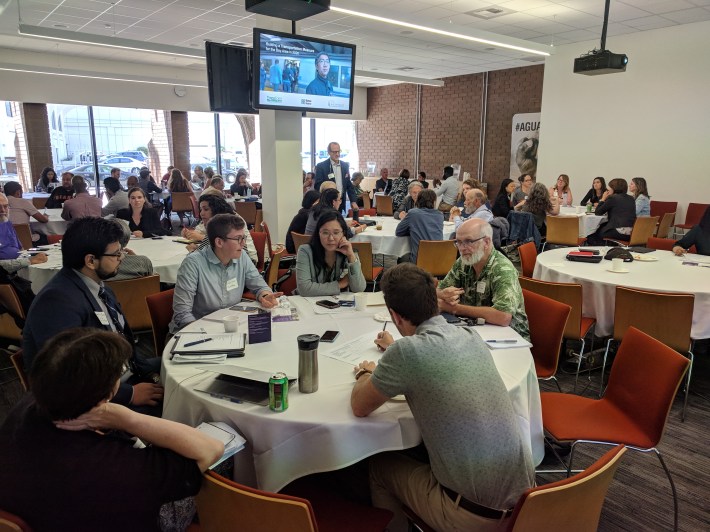
In fact, getting on track to coordinating the Bay Area's existing transit systems might be key to getting public buy-in for a huge regional measure, by making transit feel like a unified, regional system. "We want the rider to be in the center," said the Transit Riders' Selby.
The group, meanwhile, has put together a Vision Statement for the Bay Area's Regional Transportation Measure that specifies system coordination, as well as climate goals, social equity, and fair funding streams, among other things.
What do you think are the biggest challenges to creating a mega-measure? And what projects do you think need to be on the funding list? Post your comments below.
Stay in touch
Sign up for our free newsletter
More from Streetsblog San Francisco
Valencia Merchants to SFMTA: We Want Curbside Protected Bike Lanes
Valencia merchants association strengthens support for getting rid of the failed center-running bike lane and replacing it as soon as possible with curbside protected lanes
S.F. Fire Apologizes for Tweeting About Imaginary Bike Rule
There is no rule in California that says cyclists have to ride single file



